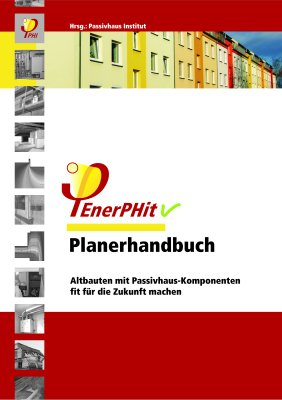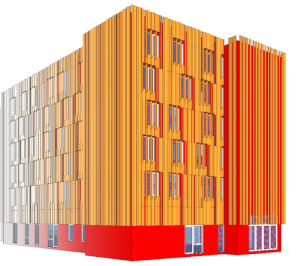The 3D modelling tool for the PHPP: designPH
The designPH plugin has been developed by the Passive House Institute to provide a 3D model interface for entering building geometry into PHPP. The benefits of the tool are two-fold; firstly it will simplify the process of entering data into PHPP and secondly it will provide preliminary feedback on the performance of the design within SketchUp.
New: Version 2.0 |
designPH 2.0 – new features
- New shading analysis based on 3D ray-tracing and Perez radiation model. Complex shading scenes can be analysed accurately and both winter and summer shading factors can be exported to PHPP.
- New "Compare results" tab allows the key analysis results to be tracked and compared over time as the model evolves.
- Assignment of user-defined Thermal Bridge component entries.
- Additional ventilation inputs such as the ventilation strategy, MVHR unit selection, pressure test result and more.
- Improved automatic naming and ordering of windows and surfaces.
- Improved User Interface.
The main highlight of this version is the new shading analysis based on 3D ray-tracing and Perez radiation model.
Currently, shading reduction factors in the PHPP are determined by entering the depth and offset of 3 discrete shading types; horizon, overhang and lateral reveal. The shading factors are then approximated by empirically derived algorithms, which have been calibrated against dynamic simulations using Dynbil.
This method has been continuously improved for over 20 years and proven to be reliable. However, using these 6 dimensions to describe all shading situations can be time consuming and restrictive in more complex situations.
A new method has been developed for designPH to calculate shading reduction factors by real-time geometric analysis of the model, based on detailed ray-trace detection of shading objects and a corresponding shading mask. This gives more easily and accurate shading factors for complex shading situations and greater sensitivity to certain types of shading objects.
Throughout the development stages we have tested and compared the shading outputs from PHPP, designPH2 and dynamic simulation results (using Dynbil) and have found good consistency and justified differences. Both designPH 2.0 and PHPP are therefore reliable tools for calculating the shading reduction factors in Passive House buildings.
Compatibility
designPH 2.0 is currently compatible with SketchUp 2017-2021 desktop versions.
Available versions
- designPH 2.0 PRO Single User License
- designPH 2.0 EDU coming soon
- designPH 2.0 DEMO coming soon
- designPH 2.0 IP PRO, EDU and DEMO coming soon
The designPH can be purchased together with PHPP.
PHPP Online ordering
PHPP in other languages
More information can be found on: www.designph.org
| Next Courses |
PHPP Expert
Passive House Designer / Consultant
Construction Verifier
Site Supervisor
![]() read more
read more
e-learning
| Events |
iPHA Webinar | "Project Spotlight: Vancouver Passive House Policy and the Fire Hall 17" | May 8, 2024
![]() read more
read more
![]() Passive House Open Days |
Passive House Open Days |
28 - 30 June 2024
![]() read more
read more
| Component Database |
 Passive House
Passive House
Component Database
read more
| Projects |
| New developments |
![]() designPH
designPH
read more
![]() NEW: PHPP 10 (2021)
NEW: PHPP 10 (2021)
read more
 Seals for Certified Passive House Components
Seals for Certified Passive House Components
read more
 Passive House Classes,
Passive House Classes,
Classic, Plus, Premium
read more
 EnerPHit -
EnerPHit -
PHI certification for retrofits
read more
 Wall plaque
Wall plaque
for certified Passive Houses
read more
| Press releases |
| Research & Literature |
![]() Passive Houses for different climate zones
Passive Houses for different climate zones
more
 Retrofits with Passive House components -
Retrofits with Passive House components -
EnerPHit Planner Handbook
(in German)
 Passive House Retail Stores now out
Passive House Retail Stores now out
Overview of contents
(in German)



